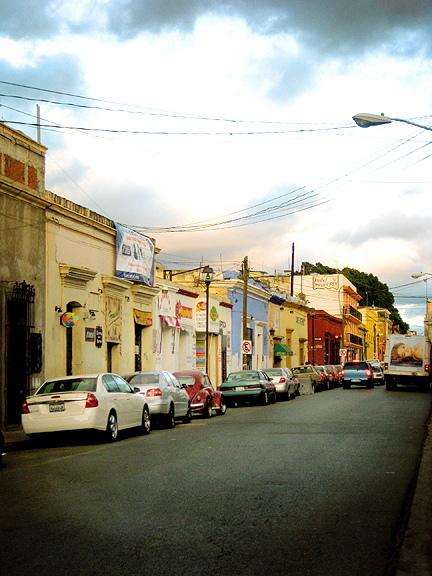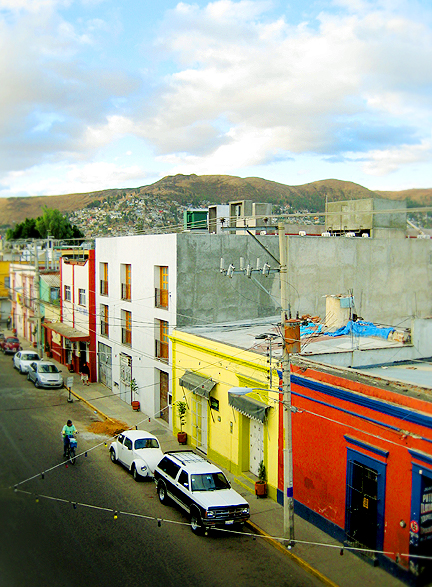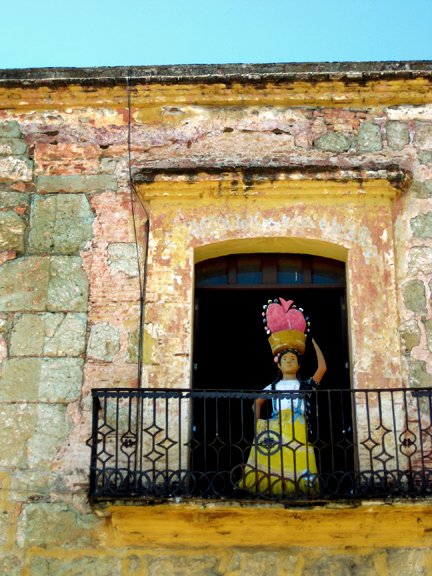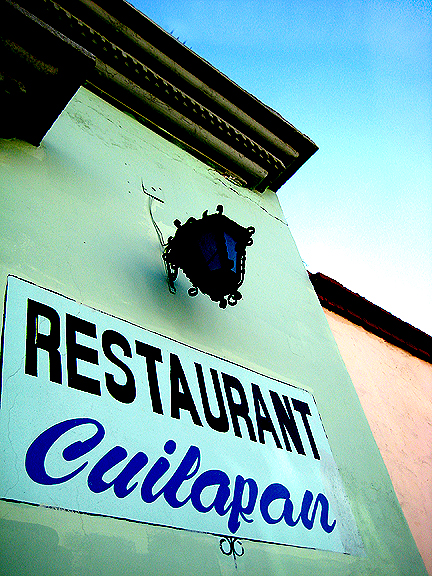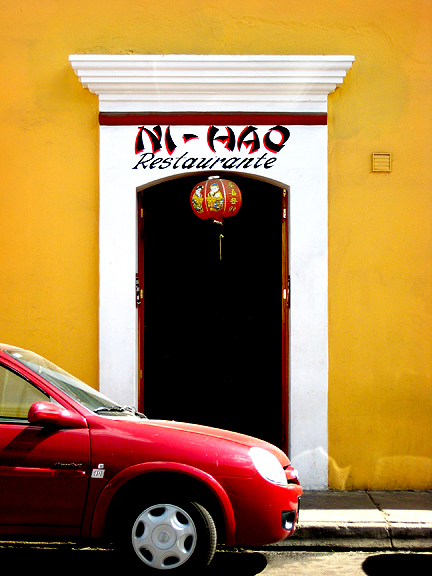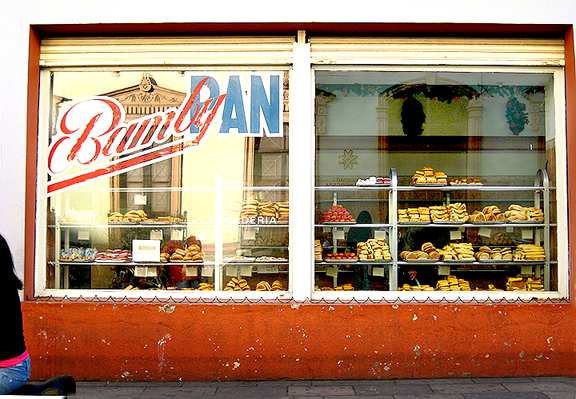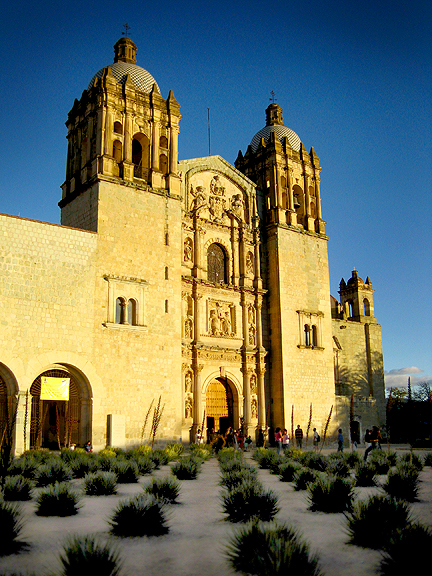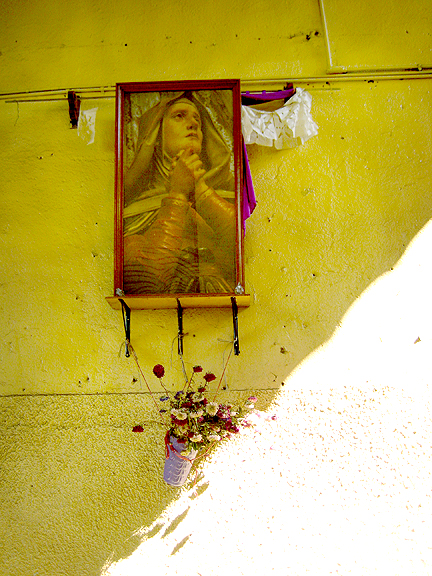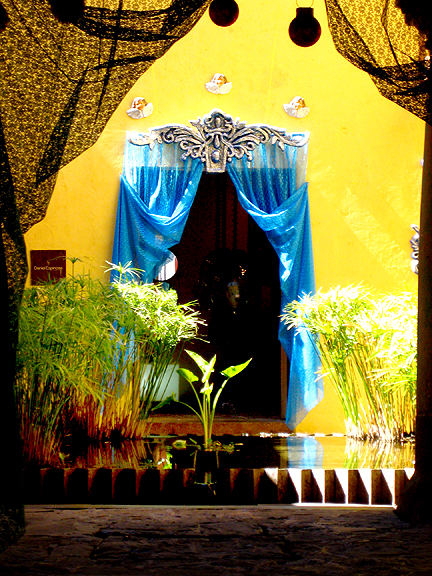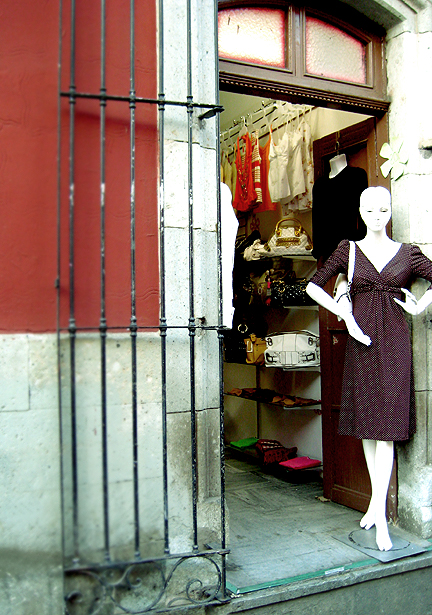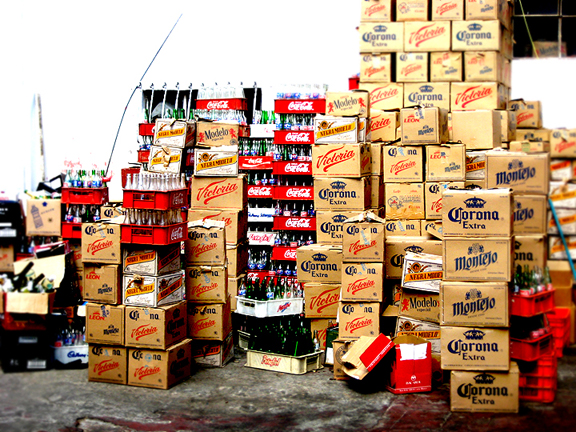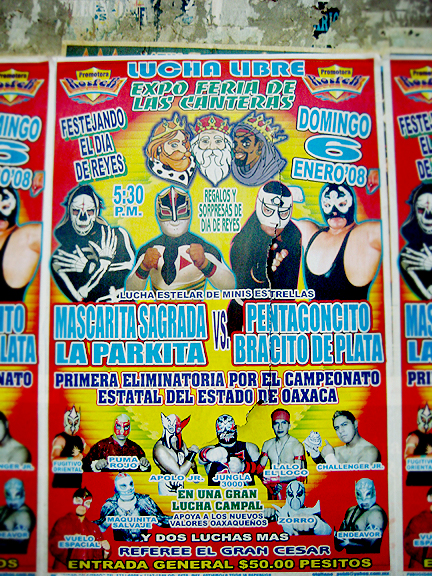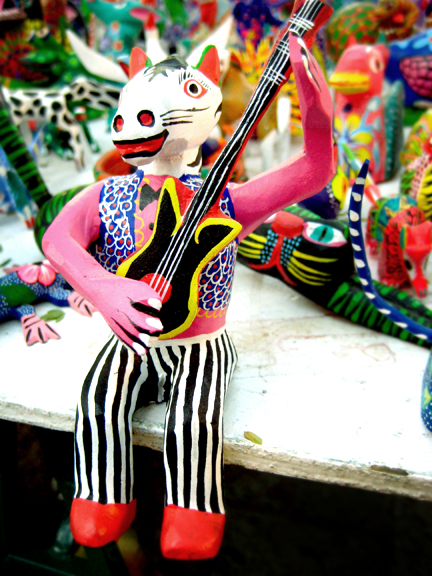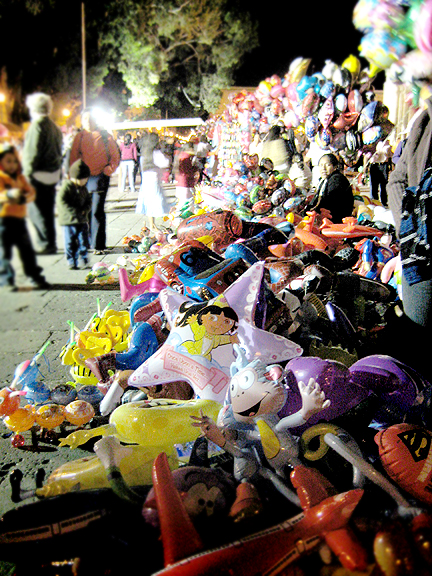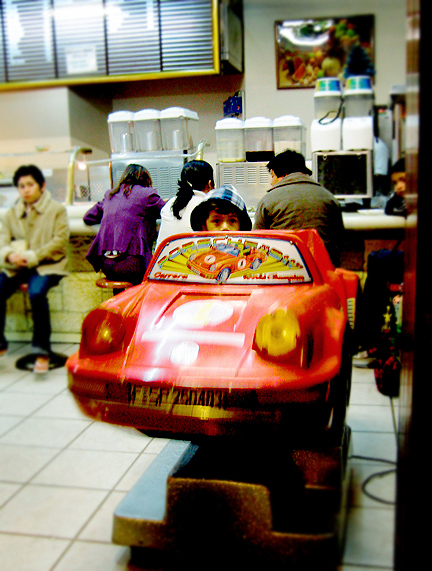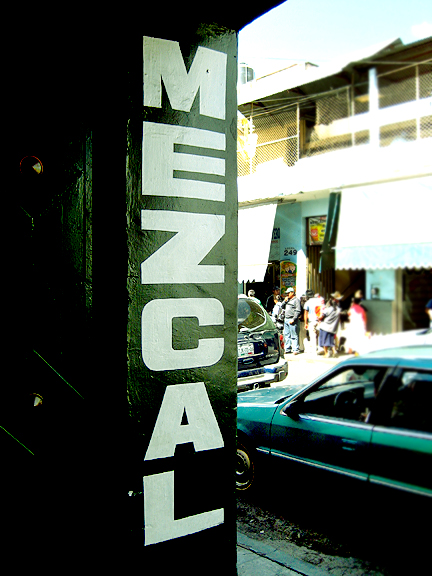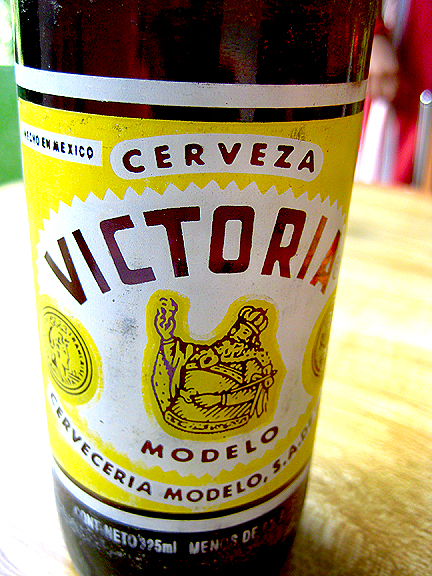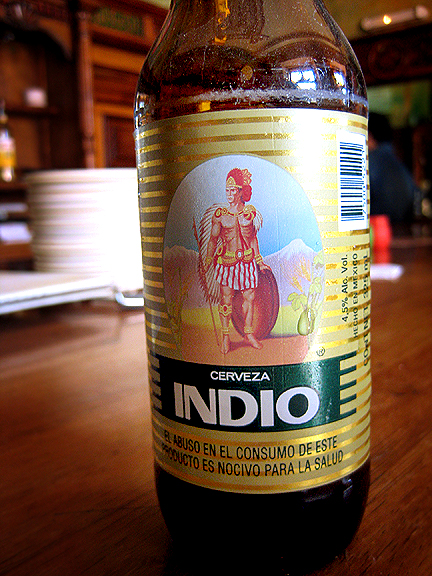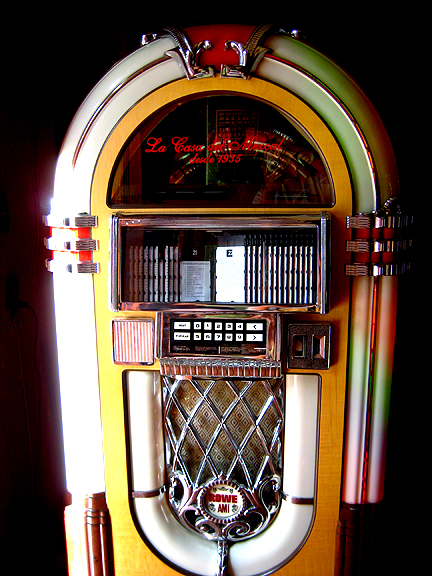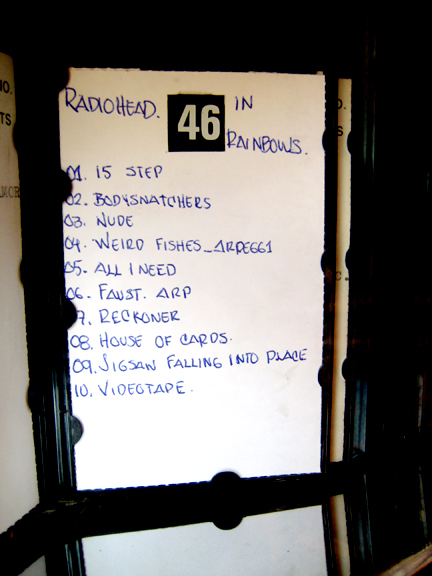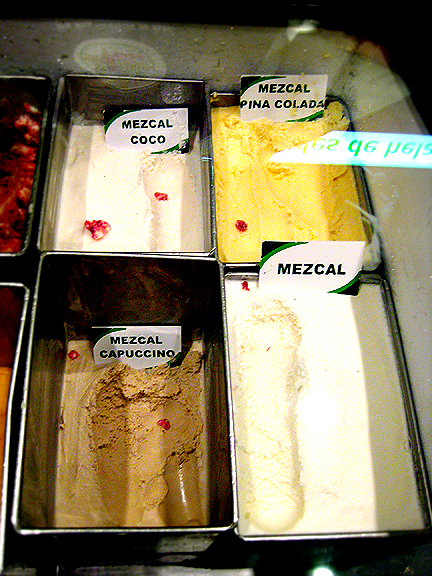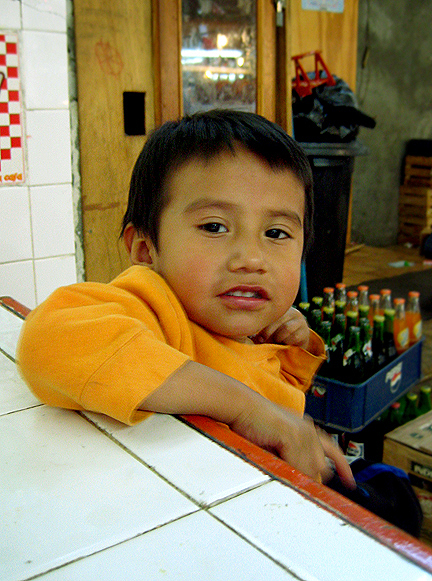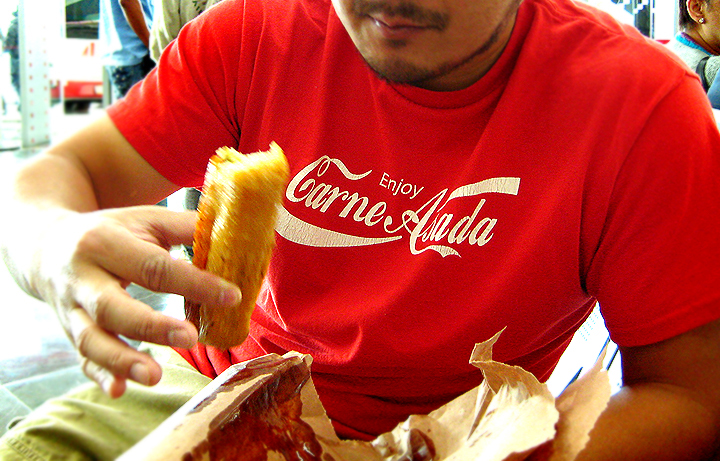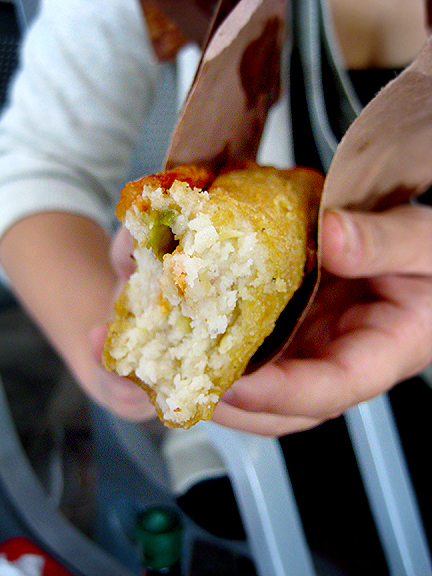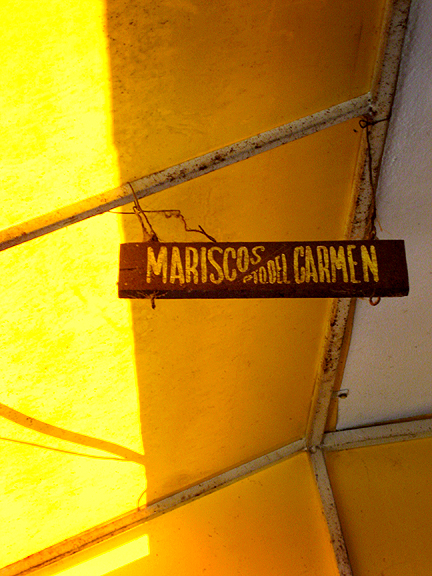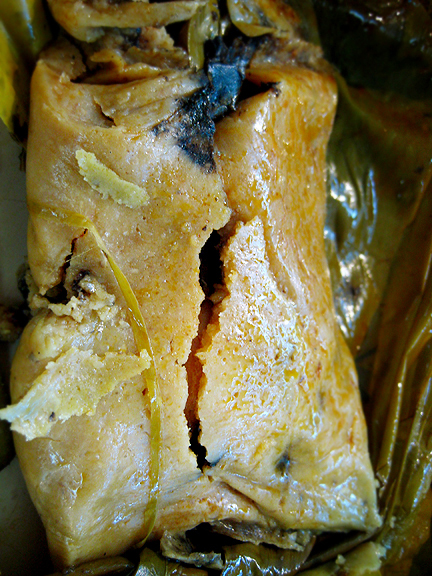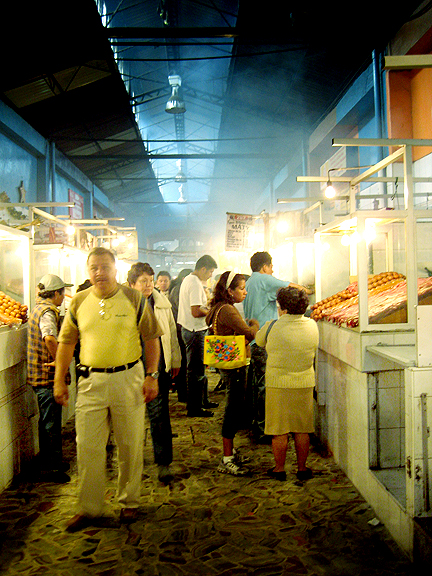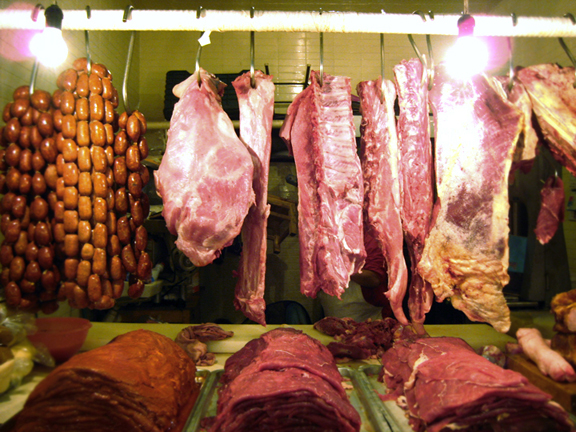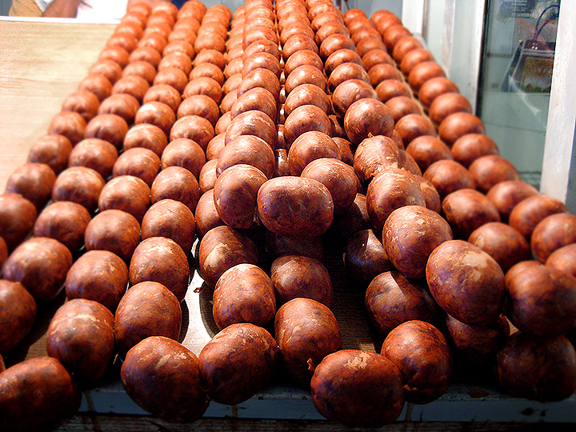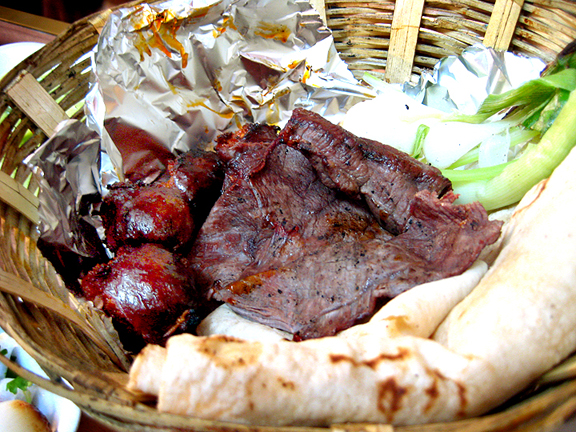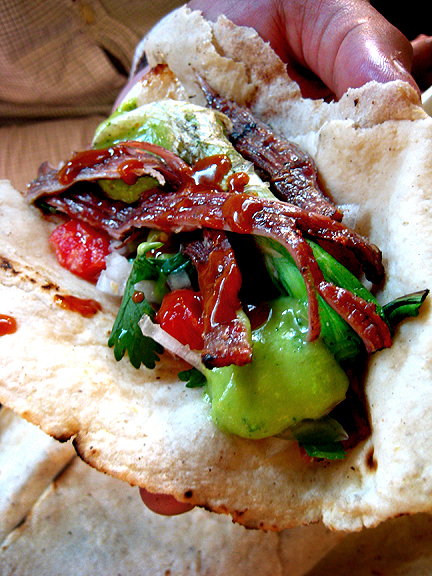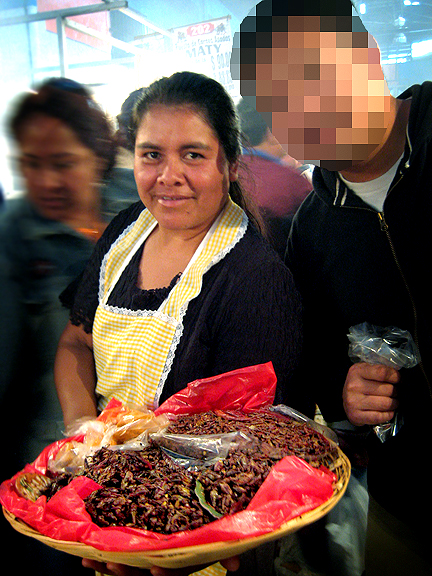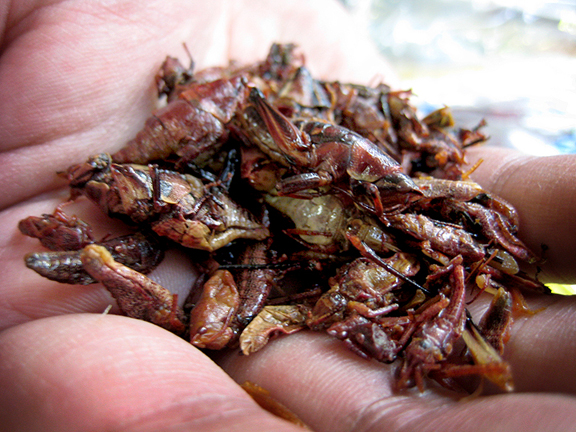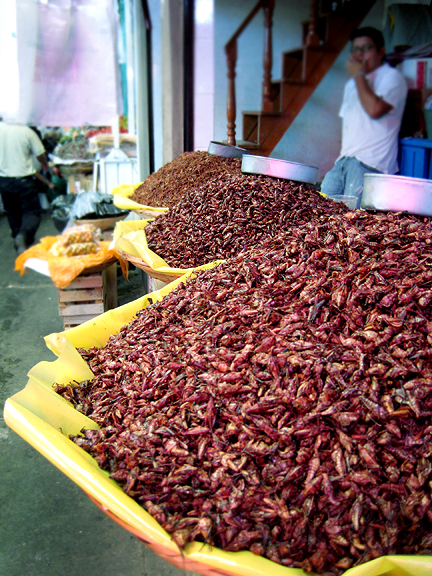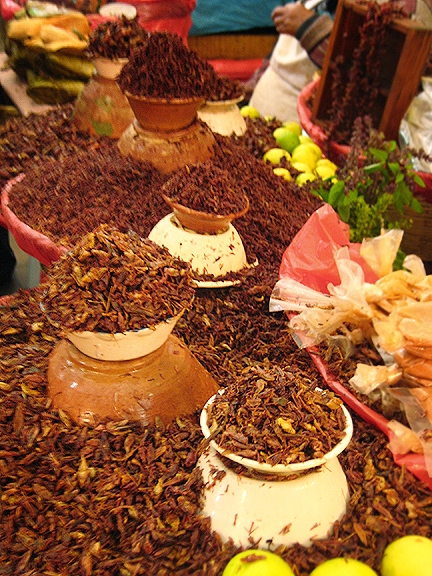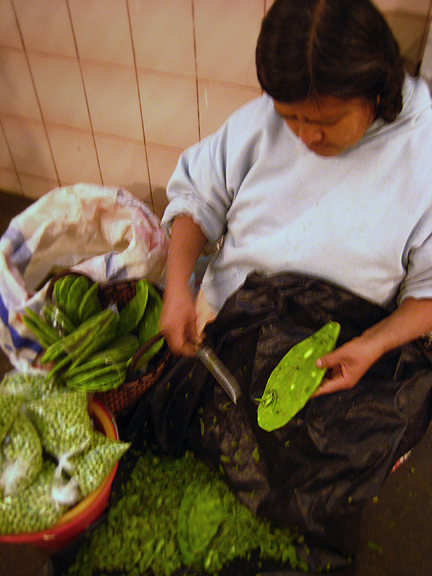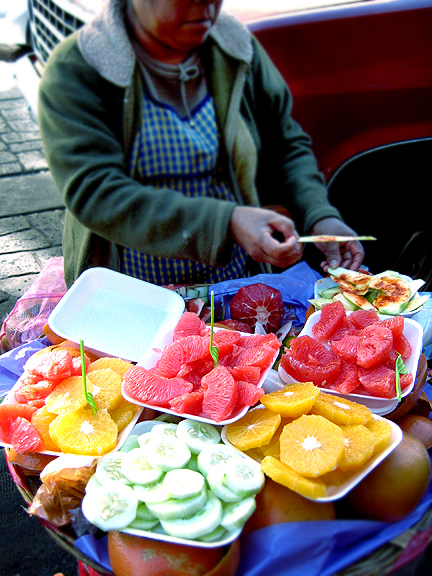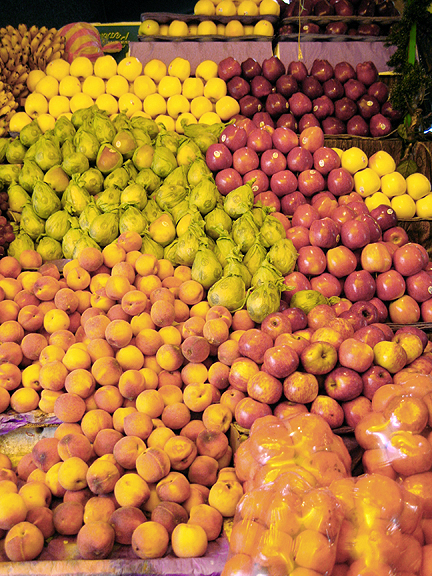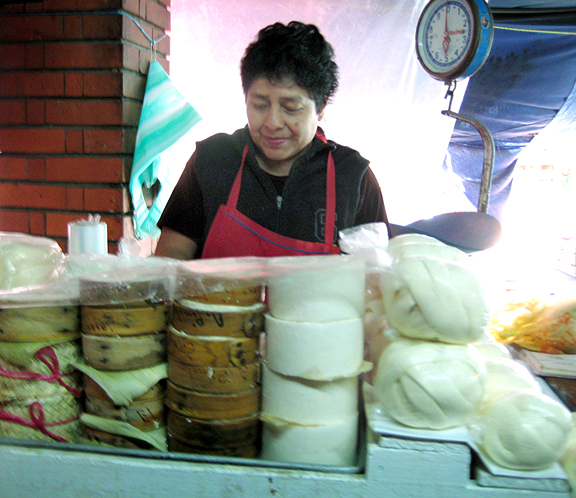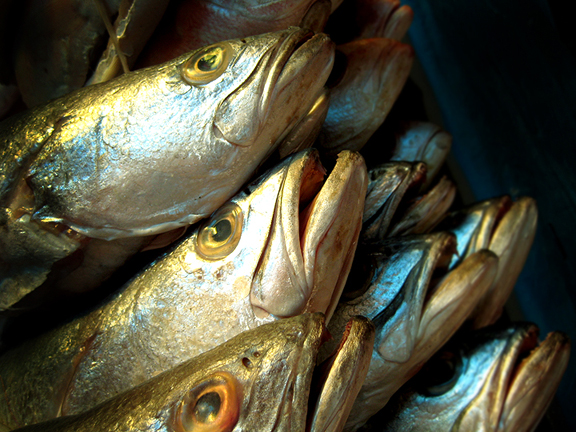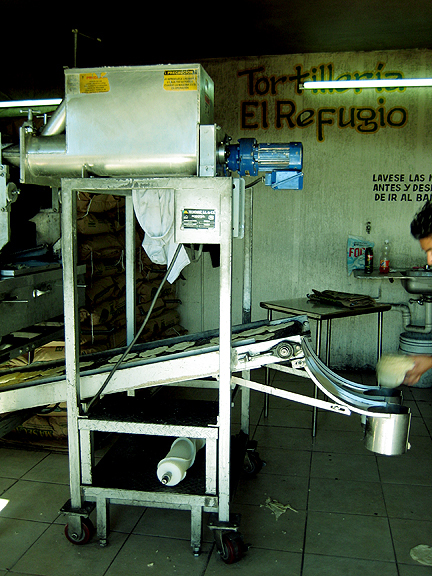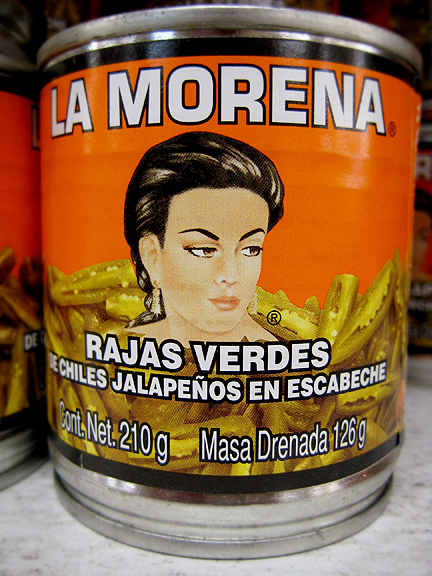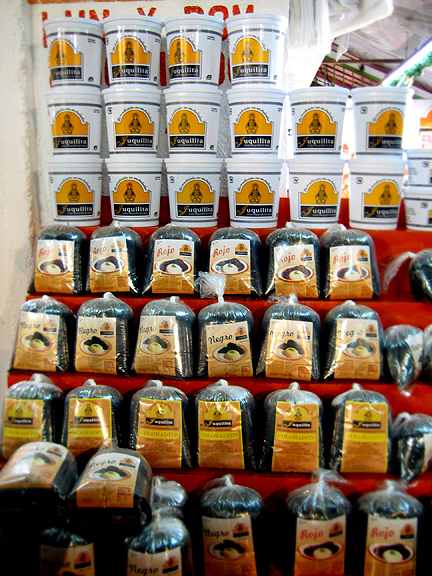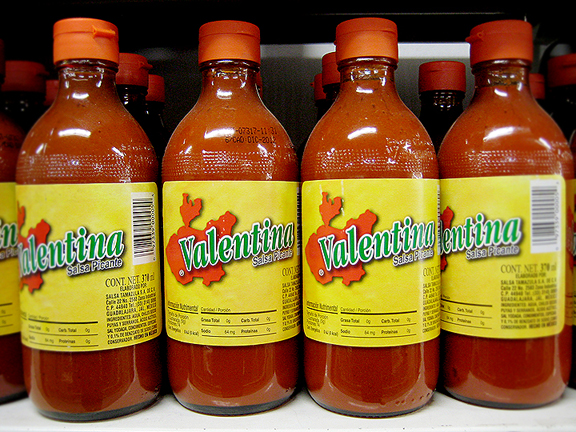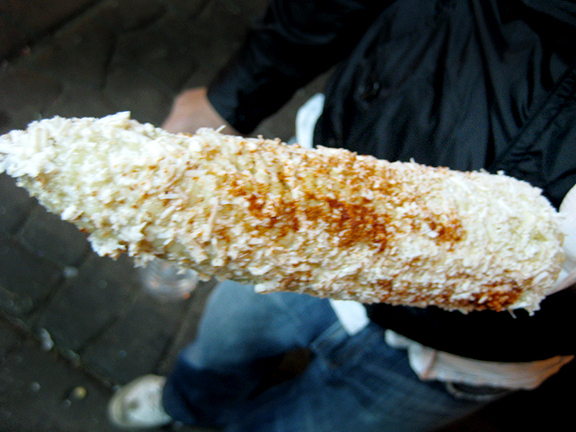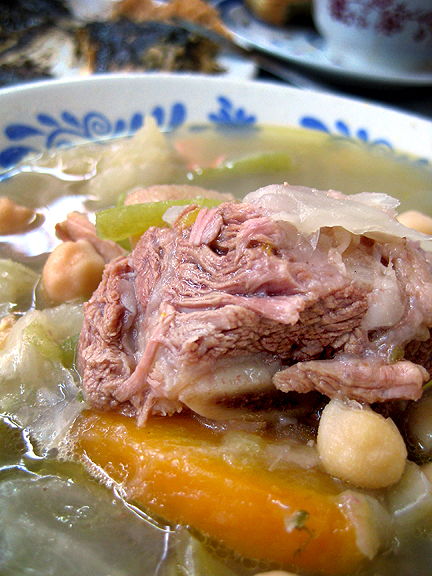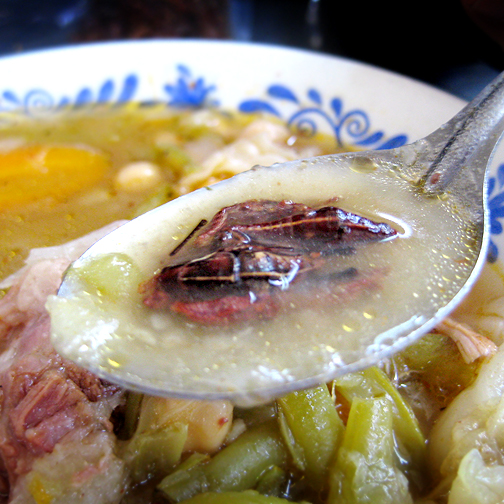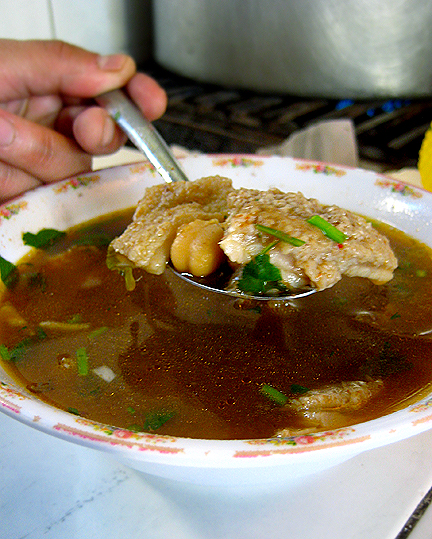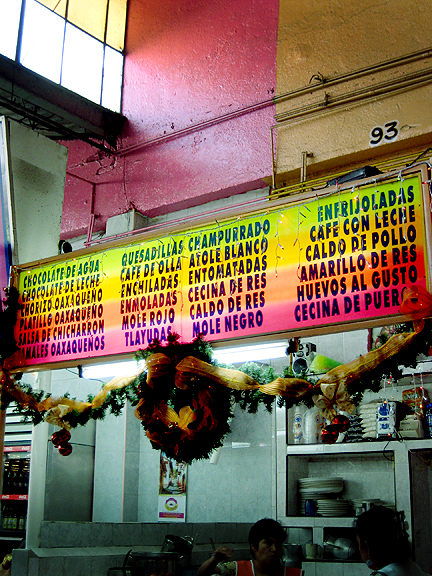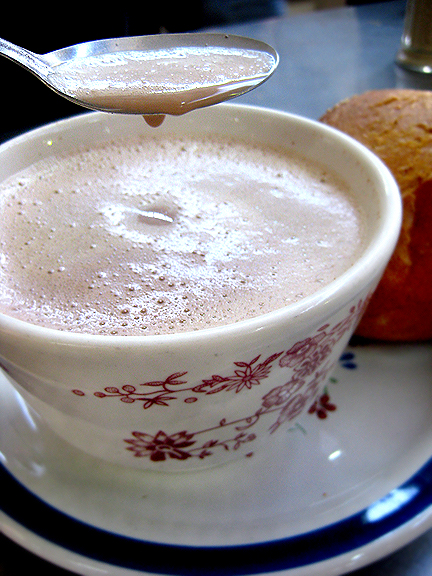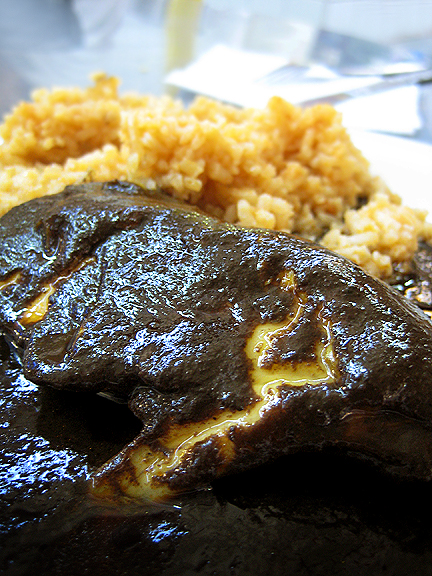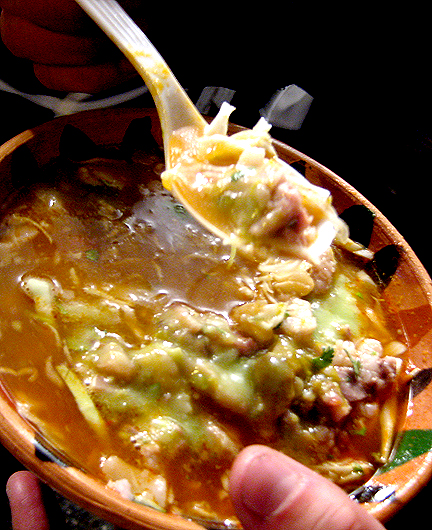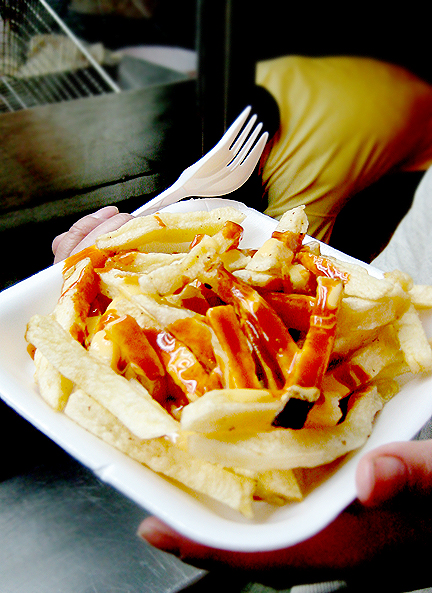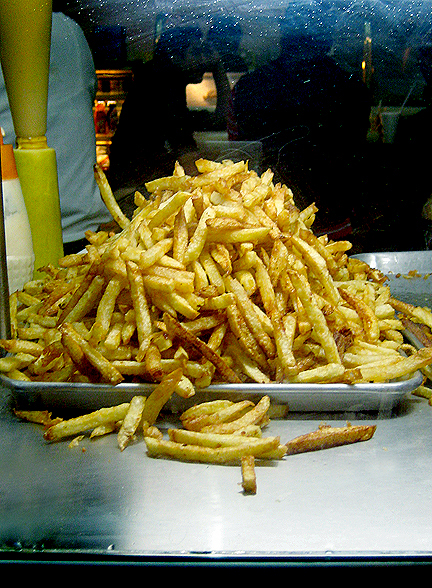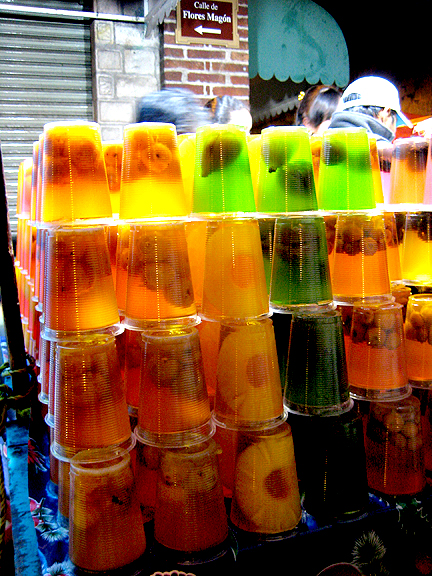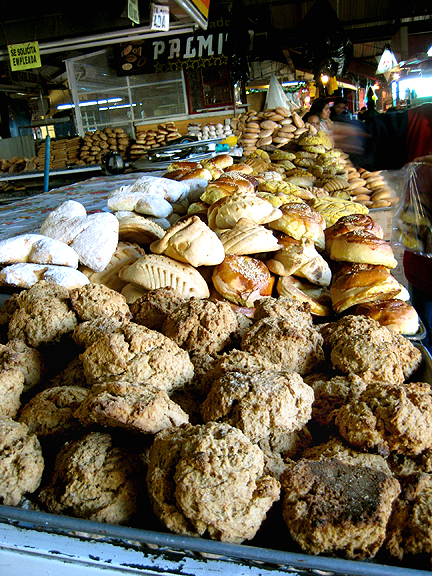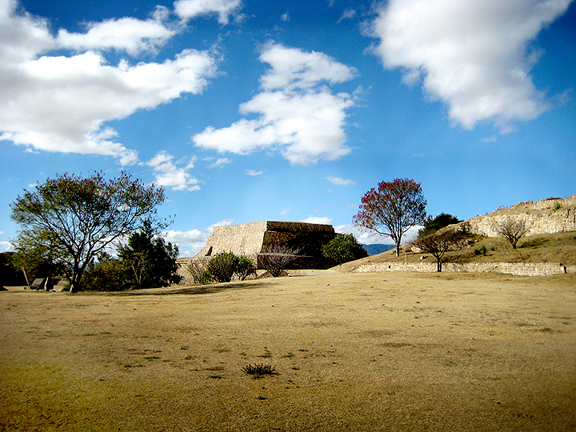After a quiet new years in the amazing Mexico City, we found ourselves waking up early and packing. We were sad to leave our $50 a night 'hostel'. In a few hours, we would be heading to the sleepy town of Oaxaca, which was a 6-hour bus ride away. I had become so used to the beachy area of Tulum and cosmopolitan lifestyle of Mexico City, that a trip to a more rural area really didn't seem appealing. As I've learned with traveling, I should always be open-minded and think optimistically. And again, I was proven wrong about the wonderful city of Oaxaca. With over 90 photos in this posting, it's obvious that Oaxaca is the best part of my trip. Never have I met such warm people in a city full of brilliance – inherent in the art, music and food.
Oaxaca is located in a rugged mountainous area on the Southern part of Mexico, just southwest of Mexico City, and a few hours drive from the Pacific Ocean. It's rugged terrain is the cause for the large number of groups in the area, formed by isolation. With quite a few indigenous Zapotec and Mixtec people still remaining in the area, it's regarded as the last glimpse of 'true' mexico, A big part of Oaxaca and surrounding areas still keep native names for streets, cities and food.
We arrived in Oaxaca around 5 pm and I was overcome with excitement. Didn't see any high-rises, subway entrances or large malls. It was pure small-town here. All the buildings were painted with bright colors... signage was either printed on a banner/tarp or directly painted on the buildings. There was really no sign of modernism here, and that was what I wanted. If you told me that it was the year 1989, I would've believed you. I quickly woke up the sleeping girlfriend who responded with a dazed, "wuh... where are we?"
"We're in Oaxaca. Time to eat!"
We got off the bus and saw the guy sitting behind us on the bus, standing around smoking a cigarette. I talked to him a little and he asked where we were staying because he was still homeless. We all shared a taxi ride to the Paulina Youth Hostel, which cost us $30 USD a night for a private room, shared bathroom and free breakfast everyday. Turns out that this backpacker, named Andy, is from Finland, and has been traveling for nearly 5 years. He has the best backpacker trade too, working as a line cook in any country he visits. Hmm, that is a good idea. Not only do you get paid, you get to learn the recipes of every country you visit.
We checked into the Paulina Youth Hostel, which was super clean. They have quite a few computers for you to use and only 5 pesos ($.50) for an hour of communication technology... something known as the internet? Have you heard of it? The dining area is a nice place to hang out and meet other backpackers. We met a guy from UCSC, some Australian guys/girls, British and a group of Korean girls who thought we were Korean. After unpacking, there was only one thing in my mind: search for food.
Ni Hao Restaurante
No joke. This is some of the best Chinese food in the world. China should just give it up. I ordered 'kung pao' chicken and they served it to me in a tortilla with some soy beans and tomato rice with Sriracha hot sauce on the side. Just kidding. We didn't eat here. I just loved the name. 'Ni hao' means 'hello' or 'how are you' in mandarin Chinese.

Man Grinding Chocolate Beans
This place makes a lot of chocolate paste, which is used for mole (pronounced 'moh-lay') and the delicious chocolate con leche (chocolate milk). There were many chocolate stores all over the town.
A Poignant Moment
While we were walking around the city, we heard a young man and his band performing. The voice was solid and in tune. I walked around the corner to watch them sing. And there he was, a young man with cerebral palsy, hands interlocked unnaturally, grasping the microphone stand. His head was raised, and his eyes looking up in a locked position. And when I looked to see what he was 'staring' at, I saw this beautiful painting of Holy Mary. It almost felt as though her presence was empowering him with the ability to sing beautifully. Really poignant.
La Lucha Libre
Jack Black shot his film, Nacho Libre, here in Oaxaca. There were posters tagged all over the city. While at an intersection, I asked the taxi driver if those were fun to attend. He said "Si! Solamente Domingo!" Sundays only. Boo. Only $5-10 to get in too! I would've loved to see this, with some delicious Oaxacan food in my hand.
Oaxacan Arts & Crafts
Besides being known as the "Land of Seven Moles", Oaxacan is in the forefront of Mexican art. Many vendors were selling these toys that reminded me of a lot of those designer toys you see in stores like Giant Robot. They were very detailed and pleasing to the eye.
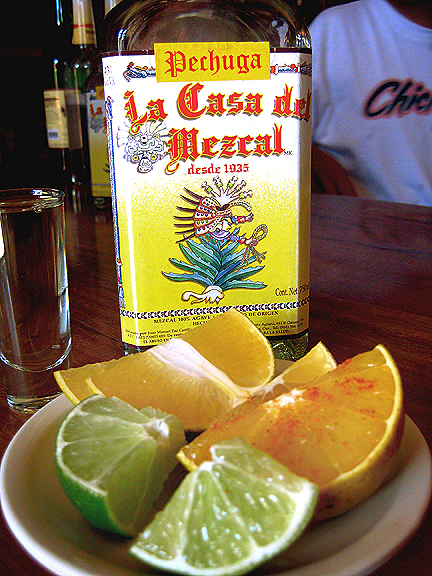
¡Ay Dios... Mezcal!
I got in trouble with mezcal in Tulum, the neglected stepbrother of tequila, and I obviously didn't learn my lesson because it's too delicious. Right Jeni? haha. In Mexico City, tequila is popular, but here in Oaxaca, it's all about the mezcal. Mezcal also comes from the maguey plant, which is related to the agave plant (there are over 400 kinds in Mexico) but distilled/fermented differently than tequila. The overall difference between mezcal and tequila is the strong smokiness. The heart of the plant, called pineapples (piñas), are first smoked in an oven and mashed (tepache) to extract the liquid. After aging them in barrels from two months to 7 years. The result is a 43%, 5 more than tequila, drink that can make you go to sleep quite quickly if you aren't careful. Like soju, it's easy to drink, but blindsides you out of nowhere. Pictured above, you can see the mezcal shot with some fruit. The fruit, grapefruit or valencia oranges, are laced with some chili salt and eaten afterwards. Ah... it goes down so smoothly. There are typically 3 grades of mezcal:
From Wikipedia
Añejo - aged for at least a year in barrel no larger than 350L
Reposado (rested) - aged two months to a year (my favorite)
Joven/Blanco - "young" white, colorless mezcal, aged less than two months
I got in trouble with mezcal in Tulum, the neglected stepbrother of tequila, and I obviously didn't learn my lesson because it's too delicious. Right Jeni? haha. In Mexico City, tequila is popular, but here in Oaxaca, it's all about the mezcal. Mezcal also comes from the maguey plant, which is related to the agave plant (there are over 400 kinds in Mexico) but distilled/fermented differently than tequila. The overall difference between mezcal and tequila is the strong smokiness. The heart of the plant, called pineapples (piñas), are first smoked in an oven and mashed (tepache) to extract the liquid. After aging them in barrels from two months to 7 years. The result is a 43%, 5 more than tequila, drink that can make you go to sleep quite quickly if you aren't careful. Like soju, it's easy to drink, but blindsides you out of nowhere. Pictured above, you can see the mezcal shot with some fruit. The fruit, grapefruit or valencia oranges, are laced with some chili salt and eaten afterwards. Ah... it goes down so smoothly. There are typically 3 grades of mezcal:
From Wikipedia
Añejo - aged for at least a year in barrel no larger than 350L
Reposado (rested) - aged two months to a year (my favorite)
Joven/Blanco - "young" white, colorless mezcal, aged less than two months
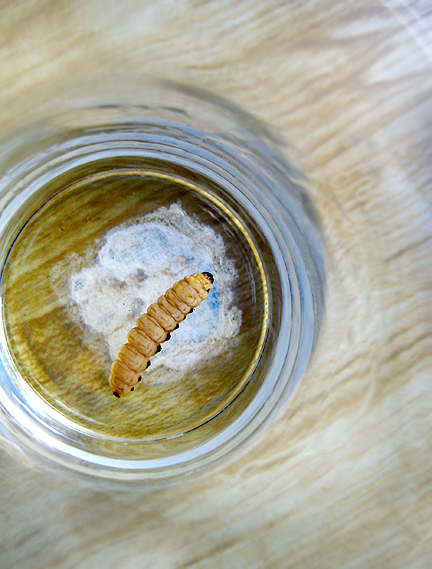
¡Ay Dios... Gusano!
Humans aren't the only things that love to hang out with agave plants. Farmers find these "worms" on the agave plant. They are larva of the agave snout weevil or agave moth. Either way, it's still an insect to us. The originator of this worm practice found that the worm actually altered the taste of agave. Now, this seems to be more of a novelty for visitors like me. I bought a few mini bottles back and hung out in the dining area of the hostel. I see the Finnish guy, Andy, and wave him over to have a drink. He apparently had already did his own mezcal tasting at 4 or 5 stores and was already a little boracho. I poured shots for us both and when it was time to eat the worm, I reached into the glass and pulled out the rigid worm, who died for a rightful cause. I ripped the worm in half and got juiced by its guts – we laughed. I then threw the worm back in and drank the rest of the shot. It tastes better than it actually looks... like a juicy raisin. We then saw a British backpacker and waved him in. We drank some more mezcal, and made him take the worm, which he hesitated on. UK guy: "dat wuhzint soooh bed man! I kahhnt say dat ai wooood doooo eet uh-gen!" I ate another 4 worms.
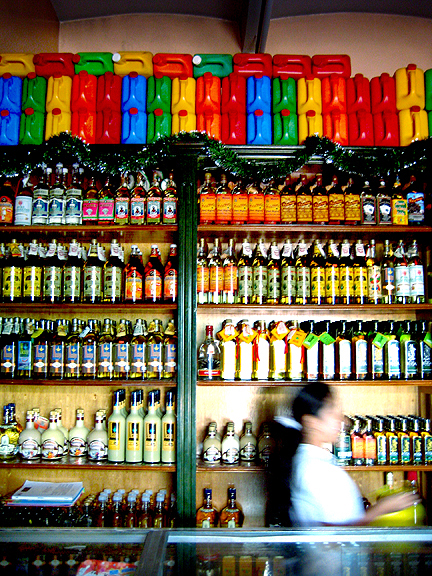

Don't sell alcohol to minors. Let them serve you instead. When we walked into this mezcal shop (mezcaleria), there was no one to be seen. Right when I said hello, this little girl popped up from behind the display cases. For a few minutes, we denied that she has ever tried mezcal. But she kept insisting that she was telling the truth. So cute. And only 12 years old. Hope she picks up books before she decides to pick up the bottle.
¡No Radiocabeza Por Favor!
J & I checked out a mezcal bar the next day and tried the house stuff here. Very good. But it was very quiet. Place needed some music. I walked over to the jukebox and checked out the selection. I was very surprised to see Radiohead! I fed my 5 pesos in expecting to hear it at a nice volume.... no... it was cranked up 100%. And my lesson to you... Oaxacan people don't really care for Radiohead. Everyone stared at me. Oh how I wished the song would change. But I was saved when some local put on some Depeche Mode.
Breakfast of Oaxacan Champions
We went to a bus station and saw a few vendors selling food. It was 10 am. I walk up to one vendor and I see this... deep fried tamales. Oh lord... ok give me one please. This wasn't very tasty nor was it good for me. It tasted like a rock, had the flavor of old oil. It only lived for about 30 seconds before we threw it out.
Mole Verde
This was a simple tamale made with green sauce (salsa verde). At the great price of 8 pesos ($.80), I was able to afford two of these for J and myself. Moist but slightly bland... I saved the day with the Maggi sauce I kept in my backpack.
Mole Negro
This is one of the classic mole sauces used in Oaxacan cooking. The mole consists of chocolate, nuts, fruit and various spices – a total of 30+ ingredients I hear. The result is a slightly sweet paste that warms the stomach and brings a smile to the face. A little hot sauce on this and you're good to go. J loved this.
Ajos Fritos (Fried Garlic)
I love garlic. But to have it deep fried in its casing and then seasoned with salt and chili is too good to be true. I ate them with the skin on... delicious. Not good for dates.
Tasajo - Mexican-style Beef Jerky
Tasajo is a mexican style of beef. Thin slices of beef (preferably the back) are marinated in achiote paste (annetto seeds) and grilled over charcoal. In this Oaxacan market called, Veinte de Noviembre (November 20th), there was a whole wing devoted to this popular style of beef. With over 20 different vendors luring you with their freshly-cut meat, it really is hard to decide on a place. Because it was so crowded, we had no choice but to sit at the least occupied 'restaurant'. Tasajo is sold by weight at 90 pesos per kg. We ordered a quarter kg and got 4 big pieces of grilled goodness. And we were far from disappointed... we came here the next day and sat at the same stall to enjoy tasajo.
Chorizo - Mexican-style Sausage
Best chorizo I've ever had. Not the mushy kind you get in a tube at the market. This was grilled and actually had crispy texture. It only costs 80 pesos ($8) per kilogram of chorizo... we ordered a quarter kg of chorizo and got about 6 sausages.
Accouterments of Tasajo
It's mandatory to order sides when eating tasajo or chorizo. They even have a sign saying that you have to. Don't pull my arm. They have pico de gallo, guacamole, radish, green onions (grilled), hot peppers, cactus, cactus salad, limes and tortillas. All are 5 to 10 pesos each. We ordered guacamole, pico de gallo, limes, green onions and tortillas.
I love this to death, more than the standard taco. You get to build your own beast. I made this huge burrito. The owner saw me and smiled. I grinned back with green onions stuck in my teeth. The majority of the people eating tasajo were families, and it's definitely one of the most economical ways to share a meal. Our total bill was 90 pesos... that's $4.50 per person. Tasajo is also very popular in Cuba.
¡Chapulines Chapulines!
That's what the sales lady said as she stuck a whole basket of what I thought were red chilis in my face. I soon recognized that these were the Oaxacan delicacy I had heard so much about. She reached her hands into her beautiful pile of maroon exoseletons and gave me a few pieces. I put it to my nose and could smell the salt (sal de gusano - salt of worm), chili and citrus juice. There was a slight funky aroma from the basket but nothing to horrible. I popped them into my mouth and loved it. I bought a little bag of these and continued to eat them. Later on, I ate them again with some beer and it just felt so right. Finnish and British guy liked them too. J tried them and said it tasted like chips. Read about Eddie's not-so-enjoyable experience with chapulines.
A 3,000-year old Snack
Chapulines are harvested a few times a year from May to October. They are cleaned, washed out and then toasted on a clay surface. The cleaning process dries up any juice in the insect, so you shouldn't worry about a gooey surprise. I tried two kinds, one was more garlicky and the other was more of a sour/salty taste from lemons and the worm salt. The sizes range from 3/4" to 1.5" – I had the smaller sized ones.
An interesting video on chapulines.
Quesillo Lady
I'll take some 'ha gao', 'siu mai', 'cha siu bao' and 'pai gwut'. I wish. This lady is stuffing cheese into wooden containers. The difference between queso and quesillo, is that quesillo is string cheese. It's a popular topping for tlayudas, a large tortilla full of goodies – somewhat of a pizza that you'll see in a moment.
Dried Shrimp (Camarón Seco)
This is an important ingredient for making caldo de mariscos, seafood soup. It adds the nice orange huse and ocean taste in one of my favorite soups.
TortillaTron 4000
It toasts and punches out at 100 TPM – that's 100 tortillas per minute. Go TortillaTron 4000!
It toasts and punches out at 100 TPM – that's 100 tortillas per minute. Go TortillaTron 4000!
Valentina Salsa Picante (Valentina Hot Sauce)
This is the ubiquitous hot sauce in Oaxaca, Mexico City, Tulum... maybe in all of Mexico. It's the Sriracha of Mexico, and it's so damn good. More smoky than it is spicy. I added this to tacos, soups and everyday items like toasted grasshoppers, eyeball tacos and corn fungus.
Corn with Mayonnaise, Chili Salt & Lime (Elotes Con Mayonesa, Sal de Chile y Lima)
This isn't a rarity. I've had it numerous times in LA and it's a big favorite amongst Mexicans. In the town center (zócalo), there were at least a dozen of these bicycle vendors parked for your enjoyment. Only 10 pesos ($1)... I ate a total of 4 in one sitting. Very hard to eat if you have chapped lips. Ow.

Corn Smut/Fungus (Huitlacoche or Cuitlacoche)
Speaking of corn, this is considered to be the 'mexican truffle'. One man's junk is another' man's treasure. Regarded as a pest in the U.S. but a delicacy in Mexico, this is a fungus that raids young corn. Farmers slice it off and seal them in containers. It's an inky dark blue color and is usually added to mushroom/cheese quesadillas. I brought it to my nose and immediately smelled a strong pungent odor of old cheese, almost like super strong Parmesan cheese. I didn't have this particular dish in the photo, which is borrowed from Eddie of Deep End Dining. My photos were on that stolen camera but I had something similar - sans chapulines. I took a bite out of the quesadilla and immediately tasted the huitlacoche. And you know what, it really added a nice sour taste to the quesadilla, which usually has a one-sided taste. I liked this a lot. But my stomach felt a little weird afterwards. I saw this in a market... $20/lb! Read about Eddie's experience here as well as Steve's at Steve Don't Eat It!
Speaking of corn, this is considered to be the 'mexican truffle'. One man's junk is another' man's treasure. Regarded as a pest in the U.S. but a delicacy in Mexico, this is a fungus that raids young corn. Farmers slice it off and seal them in containers. It's an inky dark blue color and is usually added to mushroom/cheese quesadillas. I brought it to my nose and immediately smelled a strong pungent odor of old cheese, almost like super strong Parmesan cheese. I didn't have this particular dish in the photo, which is borrowed from Eddie of Deep End Dining. My photos were on that stolen camera but I had something similar - sans chapulines. I took a bite out of the quesadilla and immediately tasted the huitlacoche. And you know what, it really added a nice sour taste to the quesadilla, which usually has a one-sided taste. I liked this a lot. But my stomach felt a little weird afterwards. I saw this in a market... $20/lb! Read about Eddie's experience here as well as Steve's at Steve Don't Eat It!
Beef Soup (Caldo de Res)
The proper word for beef is res, not carne, which means 'meat'. As in many countries, all parts of the animal should not left to waste. This popular soup consists of beef bones (beef knee, short ribs are pictured), your standard mire poix and simple salt/pepper seasonings. I had beef and pork versions, which both made me jolly. A simple dash of Maggi Seasoning or Valentina Hot Sauce magnifies the taste exponentially.
The Oaxacan way of supersizing your caldo de res, add some protein-rich chapulines! I looked at the chef as I did this and he kind of gave me a weird look. I asked him if it would be ok. He replied, "¡Porque No!", and laughed.
Pozole or Posole
Oh my favorite Mexican soup, behind caldo de mariscos (seafood soup). Pozole is a stew that consists of pork, chile, hominy, veggies, tomato paste, oregano, cumin and definitely some Maggi Sauce! It's said to be an original Colombian dish, but there are numerous variations all over Mexico and the Southwest region of the U.S. A person who is fond of pozole is called a pozelero. Which means that if a person is fond of ramen, he/she must be a rameniac. Congratulations Rickmond!
Braised Pig Head for Pozole & Tacos
I got the pozole from this vendor here. Every night we walked by here, there were a good 25 people huddling around him. He served pozole with beef or pork as well as tacos with beef or pork. He uses braised head meat, which is one of the softest and tastiest parts of the animal... cheeks especially. I ate at this cart two nights in a row.

Tacos de Ojos (Eyeball Tacos)
Again, thanks to Eddie for supplying me with this photo of eyeball tacos. The camera thief has probably deleted everything by now. What I had was similar to this, less head meat, and more of the white fatty pieces you see. I had no problems eating this b/c I knew exactly what it would taste like: tendons and cartilage braised. This was good but, like the cow brain, I'll be fine with it once because it's very high in fat calories.
Again, thanks to Eddie for supplying me with this photo of eyeball tacos. The camera thief has probably deleted everything by now. What I had was similar to this, less head meat, and more of the white fatty pieces you see. I had no problems eating this b/c I knew exactly what it would taste like: tendons and cartilage braised. This was good but, like the cow brain, I'll be fine with it once because it's very high in fat calories.
Menudo
A popular dish you can find almost in any Mexican restaurants on weekends usually. It's a consommé made with beef offals like tripe, intestine, blood cubes and liver. Sometimes chicharrones (fried pork skins) are tossed in here. Very tasty and rich... I had to add a little water in this to balance out the saltiness.
Shrimp Soup (Caldo de Camarón)
In all the markets we visited, there would be seafood vendors selling this tasty soup. The soup is basically a consommé made with dried shrimp (pictured earlier), tomato paste, vegetables, chili and garlic. This bowl was not as good as the one I had in Tulum because the shrimp was WAY overcooked – the shrimp tasted like rubber. I drank all the soup but left the camarones naked in the bowl.
Chocolate Con Leche (Chocolate Milk)
For $1.50, you can't get a better tasting cup of fresh chocolate paste, hot milk and a piece of bread. Milk is heated in a metal pitcher directly over the stove and a scoop of fresh chocolate paste is added in. Instead of stirring, the waitress holds the end of a wooden spoon with the palms of her hand – spinning the spoon so that it works like a conventional mixer. The true meaning behind hand-blended. I took a sip and loved it. Sweet, chocolate bits and a pinch of cinnamon. ¡Que rica!
Chicken with Mole Negro
With seven popular types of mole available in Oaxaca, it was hard choosing the first one to try. Since we got a preview of it in the tamale with mole negro sauce, we decided to try this over some grilled chicken. Mole negro is made with chocolate, fruits and nuts. The result is a thick, velvety sauce that can get pretty heavy. But very good overall.
Mexican-style "Pizza" (Tlayuda or Clayuda)
Next to the pozole carts, there were quite a few tlayuda vendors. A tlayuda is basically a large grilled tortilla, with a spread of black beans, topped with your choice of meat, guacamole, salsa and quesillo cheese. I had this before in LA, but with lettuce on top. I was hoping for that nice crunch but found the tortilla rather too chewy. For 27 pesos ($2.70), this can be quite a filler.
Papas a la Francesa (French-Style Fries)
I know, sounds redundant. But in Mexico, they don't pay homage to the French. Fries are simply called papas fritas (fried potatoes). These fries were made right on the spot. One guy smashing the potatoes through the grater, another guy using a mandolin to make kettle-style chips and one guy frying. The fries we ordered came with Valentina hot sauce, mayonnaise and cheese. We said no to the last two.

Monte Albán, the Midpoint
Besides the food, art, music and vibrancy that makes this little sleepy town, not so sleepy – there lies an important centerpiece of pre-Spanish culture in the area known as Oaxaca. Before the city was founded in 1486, and later colonized by Cortez in 1521 it was considered to be a powerful city for trade. Overlooking all of this was the ruins of Monte Albán, recognized for its many ceremonial shrines and residential structures. Zzzzz. I know.
But I'll tell you this, Monte Albán was considered by the Zapotec and Mixtecs as 'the closest point between heaven and earth'. A strange aura exists; both haunting yet epiphanic; tranquil yet comforting.
And I felt it.
It wasn't like seeing a turquoise ocean for the first time. Or the Eiffel Tower. It was better than that. Standing on this elevated area with deep blue skies above, it really felt as though the next level was only within an arm's reach. J & I sat together on some steep steps of one of the ceremonial sites, not saying much to each other. Neither did the UCSC guy from our hostel, who rode along with us. He sat still, slowly puffing on his hand-rolled cigarettes, in deep thought. When it came time to go, we looked over at him.
"Jeff, you wanna go? It's getting cold up here."
"I think I'm going to stay."
"Really? Herds of people are coming."
"That's fine."
"Ok."
"They say you can only spend an hour up here. I don't see how it's possible. I could spend all day here. You guys go ahead."
"It was nice meeting you."
We looked at him and smiled. We got up and started to walk away and looked back once more to see if he would wave. But he didn't. He sat perfectly still, in deep thought. It was nice knowing that there was something he had found for himself. Whatever it may have been, Monte Albán was probably one of the very best places for it to happen in.
When Cortez colonized the area of Oaxaca, the population dropped from 700,000 to 15,000 in a decade. Sad. And although, there weren't many indigenous people around the city, you could see that the heritage still lives. You see it in the old woman grinding chocolate beans in mortar and pestle. The lady selling freshly roasted grasshoppers from a wicker basket. A man playing the traditional flute. But mostly, you still see it in the faces of almost everyone that you passed. Dark eyes, dark skin, hunched backs of the elderly, and dry and wrinkled hands from decades of hard work that make Oaxaca what it is today. If it really is the last remaining outpost of the indigenous people, then I urge you to see just how beautiful this little place between the mountains is.
Thanks for reading.
Besides the food, art, music and vibrancy that makes this little sleepy town, not so sleepy – there lies an important centerpiece of pre-Spanish culture in the area known as Oaxaca. Before the city was founded in 1486, and later colonized by Cortez in 1521 it was considered to be a powerful city for trade. Overlooking all of this was the ruins of Monte Albán, recognized for its many ceremonial shrines and residential structures. Zzzzz. I know.
But I'll tell you this, Monte Albán was considered by the Zapotec and Mixtecs as 'the closest point between heaven and earth'. A strange aura exists; both haunting yet epiphanic; tranquil yet comforting.
And I felt it.
It wasn't like seeing a turquoise ocean for the first time. Or the Eiffel Tower. It was better than that. Standing on this elevated area with deep blue skies above, it really felt as though the next level was only within an arm's reach. J & I sat together on some steep steps of one of the ceremonial sites, not saying much to each other. Neither did the UCSC guy from our hostel, who rode along with us. He sat still, slowly puffing on his hand-rolled cigarettes, in deep thought. When it came time to go, we looked over at him.
"Jeff, you wanna go? It's getting cold up here."
"I think I'm going to stay."
"Really? Herds of people are coming."
"That's fine."
"Ok."
"They say you can only spend an hour up here. I don't see how it's possible. I could spend all day here. You guys go ahead."
"It was nice meeting you."
We looked at him and smiled. We got up and started to walk away and looked back once more to see if he would wave. But he didn't. He sat perfectly still, in deep thought. It was nice knowing that there was something he had found for himself. Whatever it may have been, Monte Albán was probably one of the very best places for it to happen in.
When Cortez colonized the area of Oaxaca, the population dropped from 700,000 to 15,000 in a decade. Sad. And although, there weren't many indigenous people around the city, you could see that the heritage still lives. You see it in the old woman grinding chocolate beans in mortar and pestle. The lady selling freshly roasted grasshoppers from a wicker basket. A man playing the traditional flute. But mostly, you still see it in the faces of almost everyone that you passed. Dark eyes, dark skin, hunched backs of the elderly, and dry and wrinkled hands from decades of hard work that make Oaxaca what it is today. If it really is the last remaining outpost of the indigenous people, then I urge you to see just how beautiful this little place between the mountains is.
Thanks for reading.

